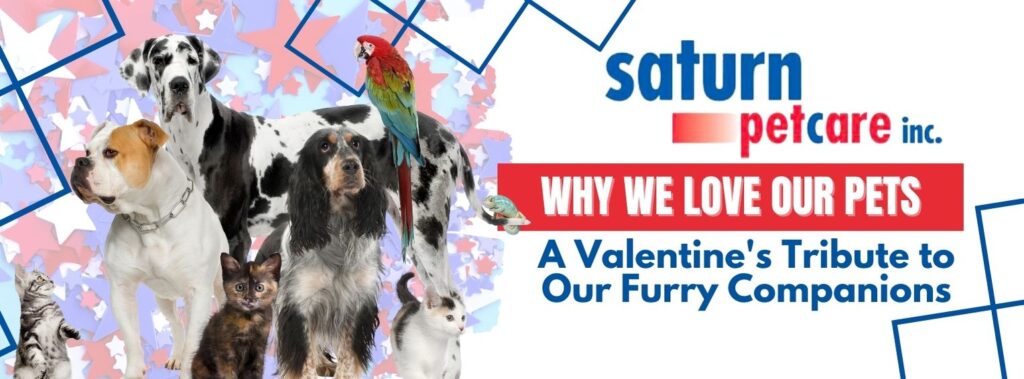Why We Love Our Pets: A Valentine’s Tribute to Our Furry Companions

As February brings the chill of winter alongside the warmth of Valentine’s Day, our thoughts naturally turn to themes of love and connection. In the spirit of this month of affection, let’s explore a love that many of us cherish deeply but might not always vocalize—the profound bond we share with our pets.
The Science of Love: Pets and Oxytocin
The love we feel for our pets isn’t just emotional; it’s biological. When we interact with our pets, whether through a gentle stroke or a cozy cuddle, our brains release oxytocin, aptly nicknamed the “love hormone.” This hormone plays a crucial role in bonding, helping to reduce stress and anxiety and fostering a sense of well-being. Moreover, taking care of our pets triggers dopamine, the neurotransmitter associated with pleasure and reward, reinforcing the joy our furry friends bring into our lives.
Beyond the biological ties, pets offer unparalleled companionship and unconditional love. They stand by us through thick and thin, offering comfort without judgment. This unconditional support can be a lifeline, combating loneliness and depression, and providing a sense of purpose and routine. For many, pets are not just animals but cherished family members who contribute significantly to our emotional support and overall well-being.
A Bond Forged Through Evolution
Our connection to pets also has roots in our evolutionary history. Humans and animals have coexisted for millennia, with animals once playing crucial roles in hunting, protection, and companionship. This long-standing relationship suggests that our affinity for pets is more than mere coincidence; it’s a bond that has been nurtured over thousands of years, fulfilling an innate human need for connection.
The history of pet ownership is as old as civilization itself, with evidence suggesting dogs were domesticated from wolves around 15,000 years ago, if not earlier. Cats joined the ranks of domesticated animals around 9,000 years ago in the Near East. Initially, these relationships were based on mutual benefit—dogs assisted with hunting and protection, while cats kept pests at bay. However, over time, these animals transitioned from helpers to companions, marking the deepening of the human-animal bond.
The Many Benefits of Pet Ownership
The impact of pets extends far beyond personal companionship. Studies have shown that pet owners often enjoy better physical health, including lower blood pressure and cholesterol levels. Children raised with pets tend to develop enhanced empathy, self-esteem, and social skills. Moreover, pets in the workplace can contribute to reduced stress levels and increased productivity and satisfaction among employees. The pet industry’s economic significance further reflects our commitment to our pets, encompassing healthcare, nutrition, and even luxury items.
A Valentine’s Day Reflection
This Valentine’s Day, as we celebrate love in its many forms, let’s also pay tribute to the furry, feathered, or scaled companions who enrich our lives. The love we share with our pets is a testament to the incredible capacity for affection that defines the human spirit. It’s a bond that not only brings joy and comfort but also enhances our lives in immeasurable ways.
So, here’s to our pets—the silent valentines who ask for little but give us so much. May we continue to cherish and nurture the special bond we share with them, not just in February but all year round.
